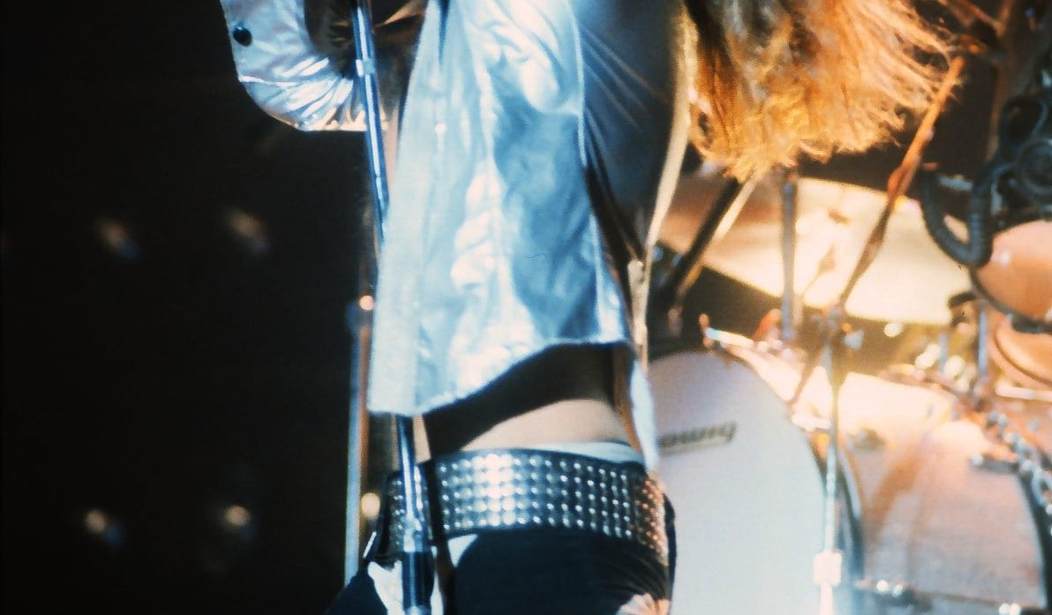It is a bedrock truth, carved into the stone of hard rock and heavy metal history, that meteoric California newcomers Van Halen seriously upstaged an unraveling Black Sabbath when the two superstar bands toured together in 1978.
Verification of this truth comes from none other than Sabs front man Ozzy Osbourne himself—who made news last week with the announcement of his Parkinson’s diagnosis.
Osbourne, to Circus Magazine, at the height of the tour: “The crowds are going (expletive deleted) wild. Van Halen are so good they ought to be headlining the tour.”
Indeed. As fans with tickets to a show on the international juggernaut billed as the Never Say Die! Tour (myself included, December 2, Oakland Coliseum) can attest, Van Halen had the high energy, the fresh riffs, and a certifiable aura of Next-Big-Thing. Sabbath, who had been grinding out their punishing repertoire for ten years, and were heavily involved with drugs and alcohol, took the stage each night to the respectful adoration due to a beloved, eclipsed, dinosaur.
This is not to say that the two groups did not get along. The guys in Halen were absolutely thrilled to open the show for their idols. Drummer Alex Van Halen has talked about how he and his bandmates went from being transfixed fans in the audience at Sabbath’s So-Cal shows, to warming up arenas in preparation for the arrival of “the dark princes of downer rock.”
Inclusion on the tour capitalized on the bombshell release of Halen’s eponymously-titled first album, which included a flaming version of the Kinks hit “You Really Got Me.” Halen would never be anything other than top-flight headliners thereafter.
Van Halen in 1978 looked and sounded amazing. It’s difficult to imagine any band of the era they couldn’t have blown off the stage:
Black Sabbath was big enough and magnanimous enough to enjoy the burgeoning success of these talented youngsters. The partying on the tour was legendary. It was also part of Sabbath’s problem. Osbourne’s substance abuse had begun to erode his dependability as a performer and touring professional.
Halen vocalist David Lee Roth tells the story of how the “Prince of Darkness” turned up AWOL before the Nashville show, leading to its cancellation. Roth’s anecdote doesn’t mention intoxication, but Osbourne’s autobiography I Am Ozzy makes it clear that the singer’s confused absence was a case of more than just tour fatigue.
Indeed. Within four months of the last stop on the ’78 tour (December 11), Osbourne was fired from the band (April 1979).
This is not to say that Black Sabbath was not good on the tour. They were, after all, Black Sabbath; their music had explored, with riveting effect, the more negative and occultist preoccupations of a generation. Van Halen’s splashdown had been epic, no doubt. But most of the concertgoers who convened at the home of the Golden State Warriors on December 2 had come to see the British Founders of Heavy Metal. What they were not prepared for was the live impact of a recently-signed and recorded quartet that had been discovered playing dive bars in Pasadena.
There were no stage effects for the show openers, no strobes, no flash-pots. Like many opening acts, though I could not confirm this, Van Halen were probably restricted as to how much square footage of stage they could utilize. But the kick-ass factor was high. Roth ran amuck, howling to the rafters. Bassist Michael Anthony laid down the mountainous bottom that he would go on to become famous for. Alex pounded metronomic hell—with thunderous fills–into the consciousnesses of the thirteen-thousand+ capacity crowd.
And there was Eddie Van Halen in the flesh, jumping, running, twisting, a whirlwind virtuoso who would shift the rock guitar paradigm much the way that Jimi Hendrix shifted it in 1967 with Are You Experienced.
There was an encore, not typical for an opening act, then a 30-minute wait and Sabbath appeared. They were good — great actually — if a bit mordant-sounding after Halen’s bare-bones excitement. During the Birmingham, England-based metal progenitor’s set, you got the state-of-art light show, the rolling fogs, the demonic evocations. You got the cosmic sludge of “Into the Void,” the roving searchlights during “Children of the Grave’s” classic breakdown.
“Never Say Die” was a pretty good song.
But while “never say die” might have been the mantra, Black Sabbath in its founding iteration was soon to meet its demise.
After Ozzy’s departure, Tony Iommi, Geezer Butler, and Bill Ward kept the dream and nightmarish music alive when they hired premiere heavy rock vocalist Ronnie James Dio to front a reinvigorated Sabbath.
After being rescued off the floor of a Los Angeles hotel room by future wife Sharon Osbourne and rehabilitated, Ozzy was reborn as a solo mega-star and full-fledged celebrity.
The Sabs would reunite and tour in 1999, and again in 2012 in support of the album 13, their first with Osbourne since Never Say Die!
Van Halen?
Grand Funk Railroad threw down a gauntlet for stateside rock bands with their anthemic 1973 hit, “We’re An American Band.”
Five years later, Van Halen picked up that gauntlet, filled it with explosives, and with all due respect threw it down again at the feet of Britain’s storied metal masters. In 1978, Black Sabbath was going through changes.
Van Halen was “On Fire.” It would have looked something like this 1981 clip:









Join the conversation as a VIP Member